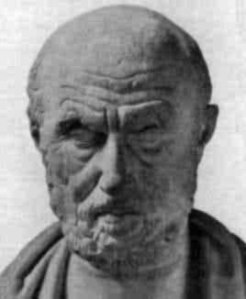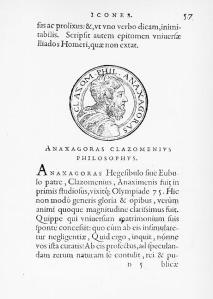Fifth Century BCE – Greece
‘A number of paradoxes; some of which seemed to prove the impossibility of motion’
Zeno was a member of the Eleatic school of thought founded by Parmenides. The School held the belief that the underlying nature of the Universe was unvarying and immobile.
In support of Parmenides’ argument, Zeno’s puzzles appeared to show that change and motion were paradoxical and that everything is one – and changeless.
Zeno’s paradoxes were based on the false assumption that space & time are infinitely divisible: that is, the sum of an infinite number of numbers is always infinite. Though they were based on fallacies, the paradoxes remained unsolved for two millennia.
Without the concepts of zero, infinity and the idea of limits, Greek philosophy and mathematics were not equipped to solve the puzzles.
The race between Achilles and the tortoise is not made up of a number of tiny distances but it is continuous until the end.
In the seventeenth century CE the Scottish mathematician James Gregory showed that it is sometimes possible to add infinite terms together to get a finite result – but to do so the terms being added together must approach zero. (This is a necessary, but not sufficient, condition – if the terms go to zero too slowly, then the sum of the terms does not converge to a finite number).
Such a series of numbers is called the convergence series, which occurs when the difference between each number and the one following it becomes smaller throughout the sequence.
The numbers 1, 1/2, 1/4, 1/8, 1/16… are approaching zero as their limit.
When you add up the distance that Achilles runs, with the terms becoming smaller and smaller, each term becomes closer to zero; each term is a step along a journey where the destination is zero.
Since the Greeks rejected the number zero they could not understand that this journey could ever have an end. To them, the terms aren’t approaching anything; the destination does not exist. Instead the Greeks saw the terms as simply getting smaller and smaller.
Using modern definitions, we know that the terms have a limit. The journey has a destination. We now may ask how far away is that destination and how long it will take to get there?
We sum up the distances that Achilles runs:
1 + 1/2 + 1/4 + 1/8 + 1/16… + 1/2n + …
As each step that Achilles takes gets smaller and smaller, it gets closer and closer to zero and the sum of these steps gets closer and closer to 2. How do we know this?
Starting with 2, we subtract the terms of the sum, one by one:
2-1=1 ; 1-1/2=1/2 ; 1/2-1/4=1/4 ; 1/4-1/8=1/8 ; 1/8-1/16=1/16…
We already know that series has a limit of zero, thus as we subtract the terms from 2 we have nothing left and the limit of the sum 1 + 1/2 + 1/4 + 1/8 + … is 2
The source of the trouble is infinity – Zeno had taken continuous motion and divided it into an infinite number of steps, assuming that the race would continue for ever as the steps get smaller and smaller. The race would never finish in finite time, but with the concept of zero we find a key to solving the puzzle.
Of course, Achilles wins the race.
Achilles takes two steps in catching up with the tortoise, even though he does it in an infinite number of increments.


 NEXT
NEXT









